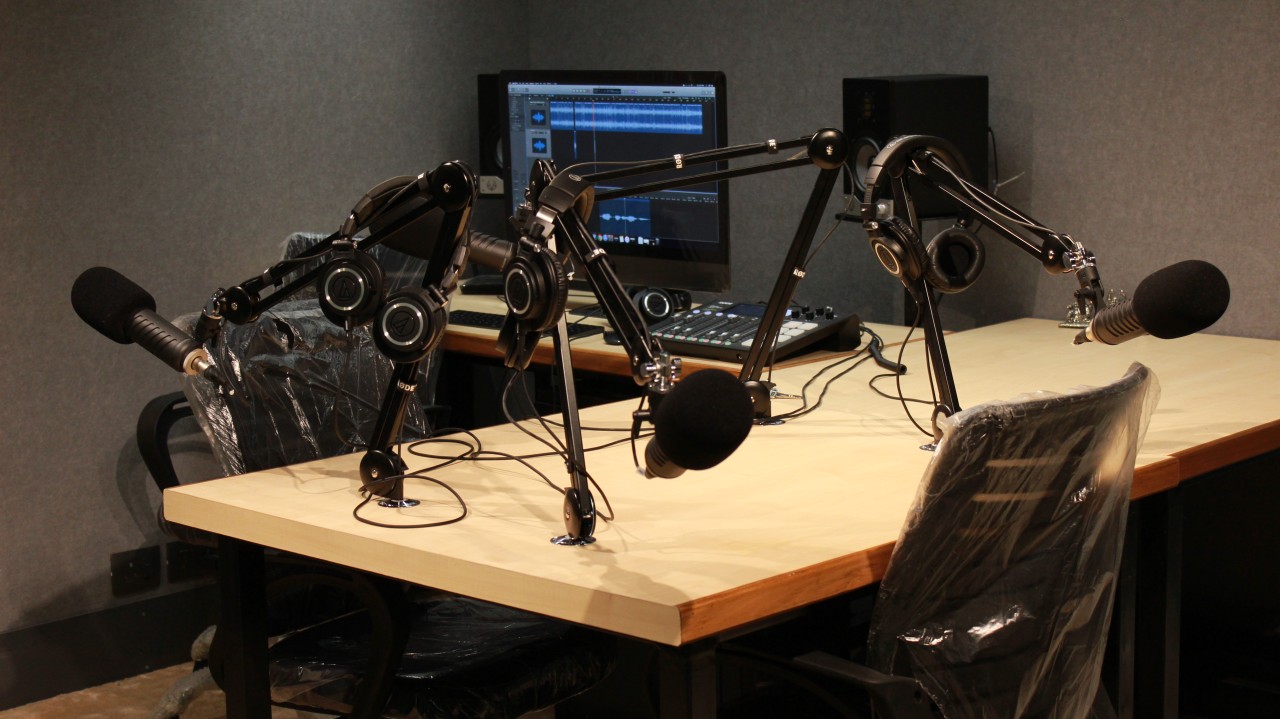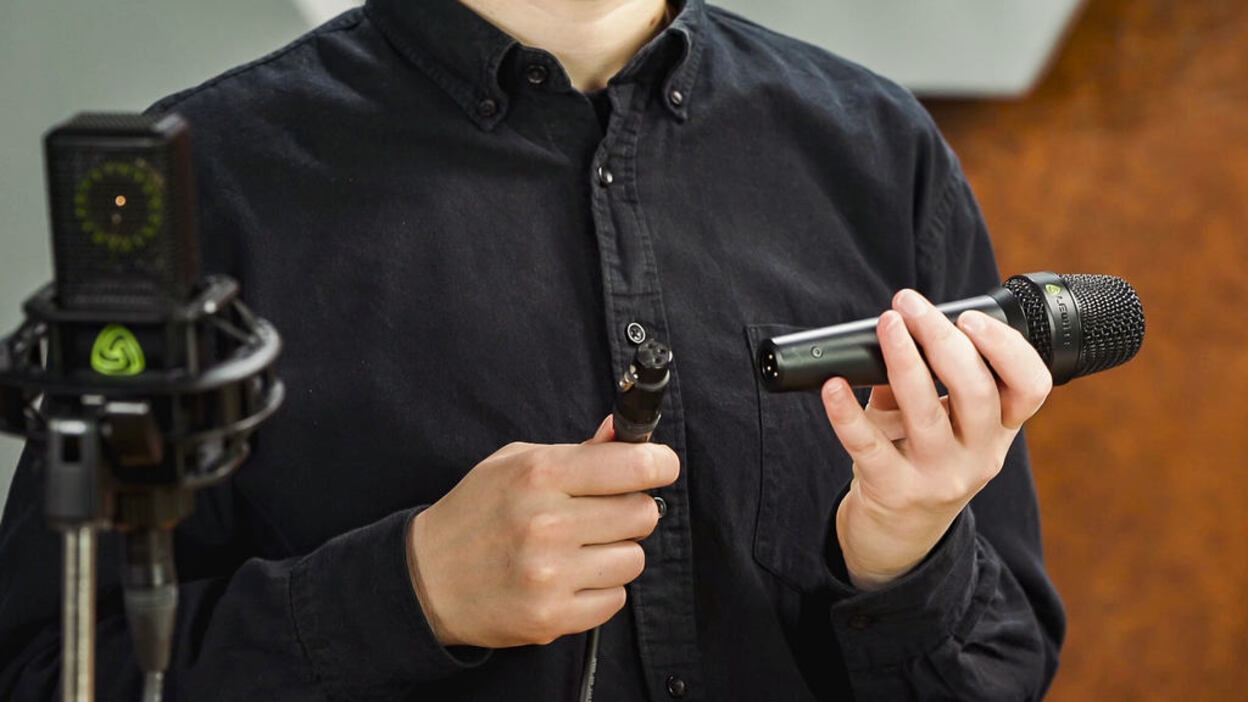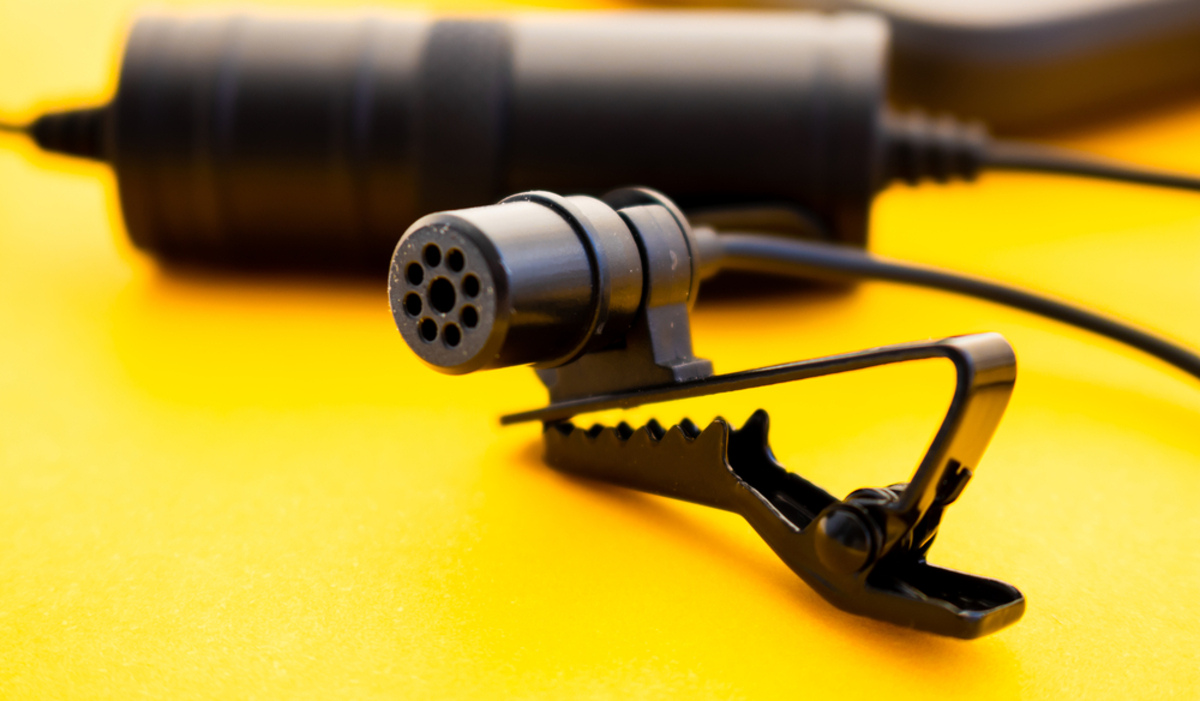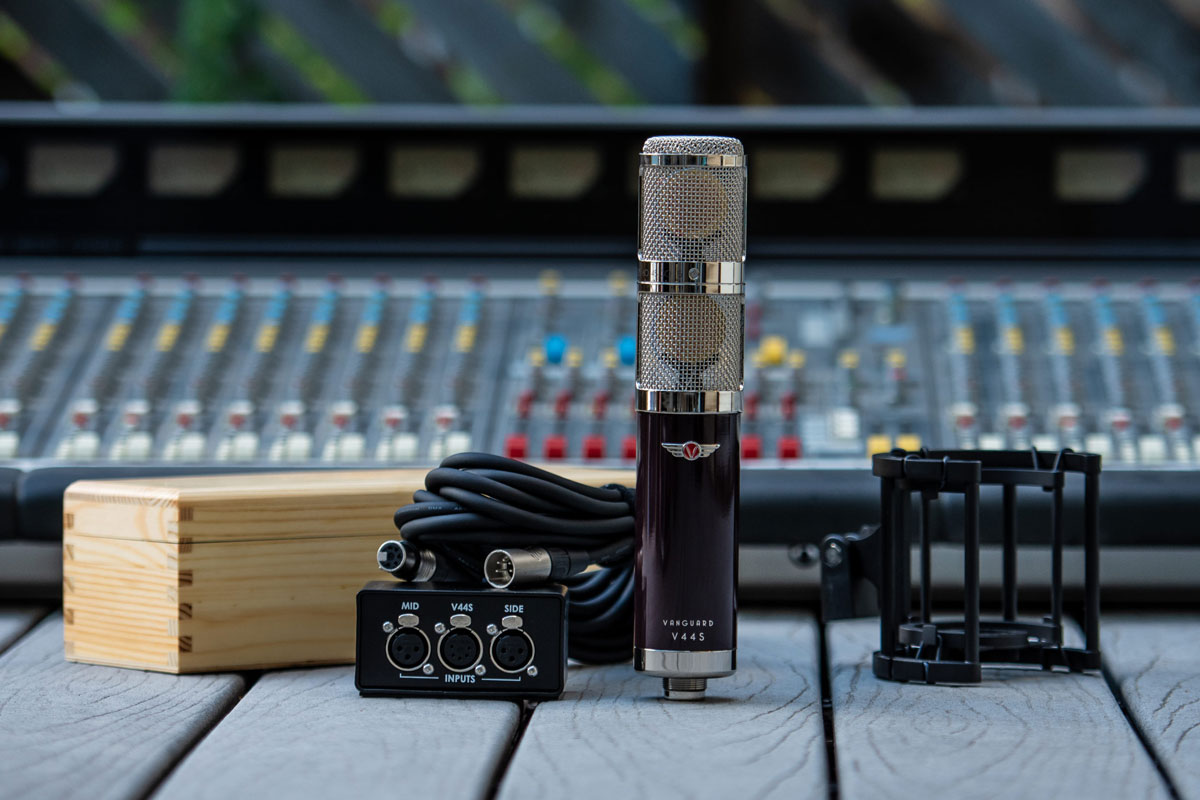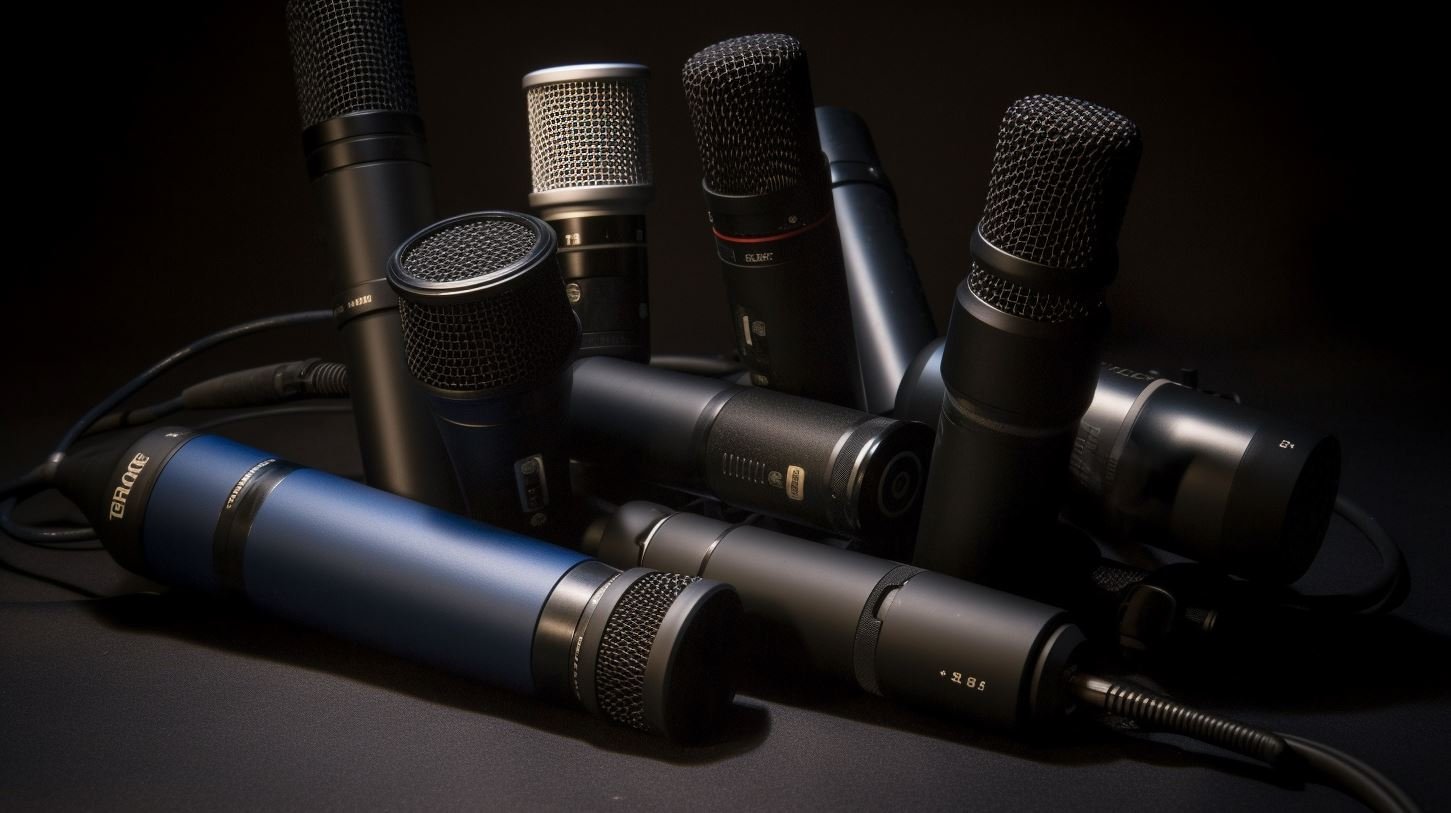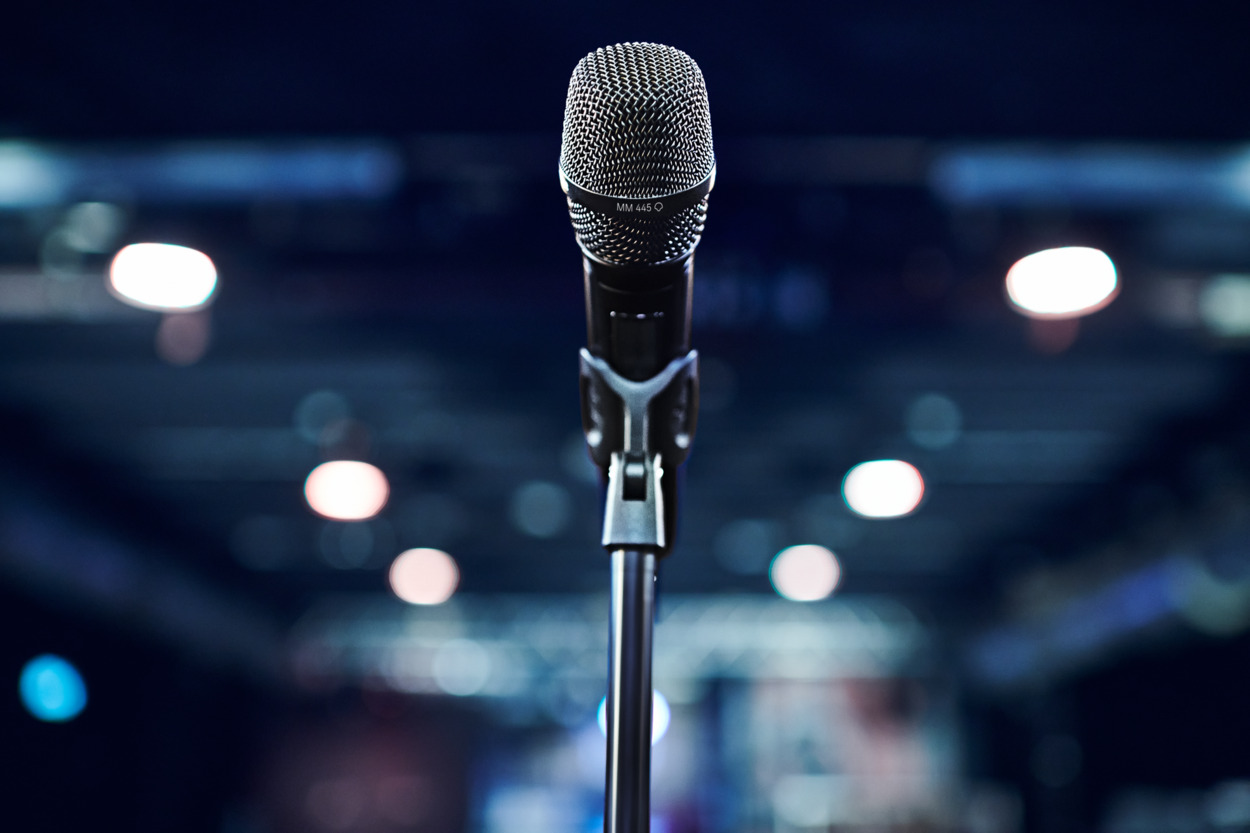Home>Events & Info>Podcast>What Is The Best Microphone For Podcast
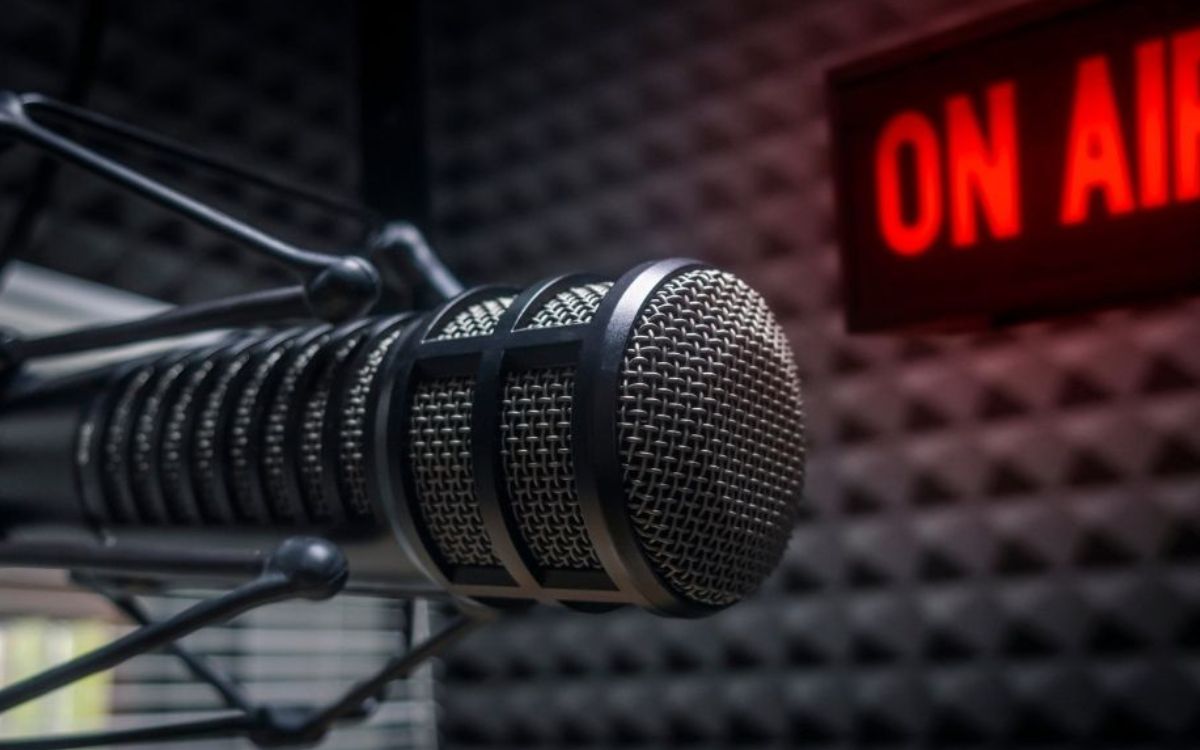

Podcast
What Is The Best Microphone For Podcast
Modified: February 17, 2024
Looking for the best microphone for your podcast? Discover the top recommendations and elevate the audio quality of your shows with these podcasting mics.
(Many of the links in this article redirect to a specific reviewed product. Your purchase of these products through affiliate links helps to generate commission for AudioLover.com, at no extra cost. Learn more)
Table of Contents
Introduction
Welcome to the exciting world of podcasting! Whether you’re just starting out or a seasoned podcaster, one of the most critical aspects of creating a high-quality podcast is choosing the right microphone. A good microphone can make a world of difference in the sound quality of your recordings, allowing your audience to fully immerse themselves in your content.
When it comes to selecting a podcast microphone, there are several factors to consider. The type of microphone, your budget, and your recording environment all play a significant role in determining the best microphone for your needs. In this article, we will explore the different types of microphones commonly used in podcasting and highlight some of the top options available in different price ranges.
There are four main types of microphones used in podcasting: dynamic, condenser, USB, and XLR. Each type has its strengths and weaknesses, and understanding these differences will help you make an informed decision.
Dynamic microphones are known for their durability and versatility. They are ideal for recording in noisy environments as they have a tight pickup pattern and can reduce background noise effectively. Dynamic microphones are also less sensitive to handling noise, making them a popular choice for podcasters.
Condenser microphones, on the other hand, are more sensitive and provide a more detailed and natural sound. They are excellent for capturing vocals and acoustic instruments with utmost clarity. However, they are more sensitive to ambient noise and may require a quieter recording environment.
USB microphones have gained popularity in recent years due to their convenience and ease of use. They connect directly to your computer via a USB port, making them plug-and-play devices. USB microphones are perfect for beginners who want a hassle-free setup but still desire good sound quality.
XLR microphones are the standard in professional audio recording. They require an audio interface or mixer to connect to your computer but offer superior sound quality and versatility. XLR microphones are a great investment for podcasters looking to take their audio production to the next level.
Now that we have a basic understanding of the different types of microphones available, let’s explore some of the best podcast microphones on the market today. We will highlight options for various budgets, ensuring that there is something for everyone.
Remember, choosing the right microphone is crucial for producing a podcast with excellent sound quality. Consider your specific needs, budget, and recording environment, and make an informed decision. With the perfect microphone, your podcast will sound professional and captivate your audience.
Factors to Consider When Choosing a Podcast Microphone
Choosing the right podcast microphone is essential for capturing high-quality audio and creating a professional-sounding podcast. Here are some important factors to consider when selecting a microphone:
- Type of Microphone: As mentioned earlier, there are different types of microphones available for podcasting, including dynamic, condenser, USB, and XLR. Consider the strengths and weaknesses of each type and choose one that best suits your recording needs.
- Sound Quality: The sound quality of the microphone is crucial for producing a podcast that is clear and enjoyable to listen to. Look for microphones that capture a wide frequency range and have low self-noise, ensuring that your voice or audio recordings are rich and detailed.
- Budget: Determine your budget for a microphone. Prices can vary greatly, so it’s important to find a microphone that fits within your budget without compromising too much on quality. Remember, a good microphone is an investment in the long-term success of your podcast.
- Recording Environment: Consider your recording environment and the potential background noise you may encounter. If you record in a noisy location, a dynamic microphone with good noise rejection would be a smart choice. If you have a dedicated quiet space, a condenser microphone may provide higher fidelity.
- Connectivity: Decide on the type of connectivity that suits your setup. USB microphones are easy to use and connect directly to your computer, while XLR microphones require an audio interface or mixer. Choose a microphone that is compatible with your recording equipment and software.
- Portability: If you often record podcasts on the go or need to transport your microphone, consider a lightweight and portable option. USB microphones are typically more compact and travel-friendly compared to larger XLR microphones.
- Durability: Look for a microphone that is built to last. Consider the build quality and materials used in the microphone’s construction, especially if you plan to use it frequently or in various settings. A durable microphone will withstand the rigors of podcasting and provide consistent performance.
- Reviews and Recommendations: Do your research and read reviews from other podcasters or experts in the field. Look for recommendations and feedback on the microphones you are considering. Hearing about other podcasters’ experiences can help guide your decision-making process.
By taking these factors into account, you will be able to select a podcast microphone that meets your specific requirements and helps you deliver top-notch audio content to your audience. Remember to prioritize sound quality, consider your budget and recording environment, and choose a microphone that is compatible with your setup. With the right microphone in hand, you’ll be well on your way to creating a podcast that sounds professional and engaging.
Dynamic Microphones
Dynamic microphones are a popular choice for podcasters due to their durability and versatility. They are designed to handle high sound pressure levels and are less sensitive to background noise, making them ideal for recording in noisy environments. Here are a few key features and benefits of dynamic microphones:
- Durability: Dynamic microphones are robust and built to withstand rough handling, making them suitable for podcasters who often record on the go or in unconventional locations. They can handle accidental drops and bumps without affecting their performance.
- Noise Rejection: These microphones have a tight pickup pattern, which means they mainly capture sound sources in front of them and reject background noise from the sides and rear. This makes them excellent for recording in environments with high ambient noise, such as coffee shops or busy offices.
- Less Sensitive to Handling Noise: Dynamic microphones are less prone to capturing handling noise, such as the sound of your hands touching the microphone or the vibrations from a desk or table. This allows for a more seamless recording experience without unwanted distractions.
- Wide Frequency Response: While dynamic microphones may not provide the same level of detail and high-frequency response as condenser microphones, they still offer a broad and balanced frequency range. This ensures that your voice or audio recordings are clear and well-represented across the spectrum.
- Affordability: In comparison to condenser microphones, dynamic microphones are generally more budget-friendly. If you’re just starting out with podcasting or have budget constraints, a dynamic microphone can provide a solid and reliable solution at a more affordable price point.
- Examples of Dynamic Microphones: Some popular dynamic microphones used by podcasters include the Shure SM58, the Electro-Voice RE20, and the Audio-Technica ATR2100x-USB. These microphones have proven track records of delivering excellent sound quality and durability.
Overall, dynamic microphones are a great choice for podcasters who want a dependable and versatile microphone that can handle various recording environments. Whether you’re podcasting on the road, recording in a noisy space, or simply looking for an affordable option without compromising on sound quality, a dynamic microphone is a reliable and effective tool in your podcasting arsenal.
Condenser Microphones
Condenser microphones are widely regarded as the gold standard for capturing high-quality audio in podcasting. They are known for their exceptional detail and sensitivity, making them the preferred choice for recording vocals and capturing nuanced sound sources. Here are some key features and benefits of condenser microphones:
- Superior Sound Quality: Condenser microphones offer a wider frequency response and greater sensitivity compared to dynamic microphones. They capture more nuances in vocals and instruments, resulting in a more natural and detailed sound. If you prioritize pristine audio quality, a condenser microphone is an excellent option.
- Extended Frequency Range: Condenser microphones can capture a broader range of frequencies, from low to high. This allows for more accurate reproduction of different types of voices and instruments, ensuring that your podcast recordings have a rich and full sound.
- Low Self-Noise: Condenser microphones have lower self-noise levels, meaning they produce minimal hiss or background noise. This is particularly important for capturing subtle details and creating a clean recording environment.
- Transparent Sound: Condenser microphones are renowned for their transparency, meaning they accurately represent the original sound source without adding coloration or distortion. This is highly advantageous for podcasters aiming for a natural and authentic sound.
- Requires Phantom Power: Most condenser microphones require phantom power to operate, which is a power source provided by an audio interface or mixer. Make sure your recording setup includes phantom power capabilities or opt for a USB condenser microphone that doesn’t require an external power source.
- Quiet Recording Environments: Due to their high sensitivity, condenser microphones are best suited for controlled recording environments with minimal background noise. They excel in studios or quiet home setups where background noise can be minimized.
- Examples of Condenser Microphones: Popular condenser microphones used by podcasters include the Audio-Technica AT2020, the Rode NT1, and the Neumann U87. These microphones are renowned for their exceptional sound quality and are trusted by professional podcasters and audio producers.
Condenser microphones are ideal for podcasters who prioritize top-notch sound quality and have a controlled recording environment. If you are looking to capture every nuance of your voice or want your podcast to have a more professional and polished sound, a condenser microphone is an excellent investment.
USB Microphones
USB microphones have become increasingly popular among podcasters due to their simplicity and ease of use. They are designed to connect directly to your computer via a USB port, eliminating the need for additional audio interfaces or mixers. USB microphones offer several advantages that make them a convenient choice for podcasters:
- Plug-and-Play Convenience: USB microphones are incredibly easy to set up. You simply connect them to your computer, and they are ready to use. This makes USB microphones an excellent option for beginners or podcasters who prefer a hassle-free setup.
- Portability: USB microphones are typically compact and lightweight, making them highly portable. They are perfect for podcasters who are frequently on the move or need to record podcasts outside of their usual recording space.
- Cost-Effective: USB microphones are generally more affordable compared to their XLR counterparts. They provide a cost-effective solution for podcasters who want good sound quality without breaking the bank.
- Versatility: USB microphones are versatile and can be used for various purposes beyond podcasting, such as recording voice-overs, gaming, or live streaming. Their flexibility makes them a versatile tool that caters to different audio recording needs.
- Sound Quality: While USB microphones may not offer the same level of sound quality as professional XLR setups, they still provide decent audio quality for podcasting. Many USB microphones feature built-in analog-to-digital converters (ADC) that ensure accurate sound reproduction.
- Examples of USB Microphones: Some popular USB microphones used by podcasters include the Blue Yeti, the Audio-Technica ATR2500x-USB, and the Rode Podcaster. These microphones offer a range of features and sound options to suit different podcasting styles.
USB microphones are an excellent choice for podcasters who value simplicity and convenience. If you are a beginner starting a podcast or if you need a portable and cost-effective option, a USB microphone is a practical and reliable solution. While USB microphones may not offer the same level of customization and sound quality as XLR microphones, they provide a straightforward way to capture good audio for podcasting.
XLR Microphones
XLR microphones are the standard choice for professional audio recording, including podcasting. They require an XLR cable to connect to an audio interface or mixer, providing a wide range of options for customization and control over your sound. Here are some key features and benefits of XLR microphones:
- Superior Sound Quality: XLR microphones are known for their exceptional sound quality, capturing every detail and nuance of your voice or audio recordings. They offer a wide frequency response and high sensitivity, ensuring that your podcast sounds professional and polished.
- Flexibility and Customization: XLR microphones provide greater flexibility in terms of audio control and customization. With an audio interface or mixer, you can adjust settings such as gain, EQ, and phantom power to achieve the desired sound. This level of control allows you to tailor the audio to your specific preferences.
- Expandability: XLR microphones offer the opportunity for further expansion and equipment integration. You can connect multiple XLR microphones to a mixer to accommodate co-hosts or guests, or integrate other audio equipment like compressors or sound processors to enhance your sound quality.
- Professional Studio Quality: XLR microphones are widely used in professional studios and radio stations due to their high-quality performance. If you’re aiming for a broadcast-quality podcast or want to take your audio production to the next level, an XLR microphone is an essential investment.
- Reliability and Longevity: XLR microphones are built to last. They are constructed with durable materials and are designed to handle rigorous use. This makes them a reliable choice for podcasters who require a microphone that can withstand frequent use and various recording conditions.
- Examples of XLR Microphones: Popular XLR microphones used by podcasters include the Shure SM7B, the Audio-Technica AT2035, and the Rode Procaster. These microphones offer excellent sound quality and are favored by professionals in the industry.
XLR microphones provide podcasters with the highest level of audio quality, control, and versatility. If you are serious about producing a professional-sounding podcast and you have the necessary equipment and setup, an XLR microphone is the ideal choice. The additional control and customization options offered by XLR microphones allow you to achieve the exact sound you desire, and their durability ensures that they will serve you well for years to come.
Best Podcast Microphones for Different Budgets
When it comes to purchasing a podcast microphone, your budget will inevitably play a determining role in the options available to you. Fortunately, there are excellent choices in various price ranges that deliver impressive sound quality. Here are some of the best podcast microphones for different budgets:
- Entry-Level Budget: If you’re just starting out with podcasting or have a limited budget, there are affordable options that still offer good sound quality. The Audio-Technica ATR2100x-USB is a popular choice in this category. It is a dynamic microphone with both USB and XLR output options, allowing for versatility as your setup and budget expand.
- Mid-Range Budget: In the mid-range budget category, the Audio-Technica AT2020 USB+ offers excellent value for money. This condenser microphone provides high-quality audio and features a built-in headphone jack for real-time monitoring. It is a USB microphone that is easy to set up and delivers professional-sounding results.
- Higher-End Budget: If you have a more generous budget and are seeking top-notch sound quality, the Shure SM7B is a popular choice among professional podcasters. This dynamic microphone is highly regarded for its broadcast-quality sound reproduction and superior noise isolation. It requires an XLR connection and works best in a controlled recording environment.
Remember, when choosing a microphone, it’s important to consider your specific needs, budget constraints, and recording environment. Consider whether you require a USB microphone for simplicity, an XLR microphone for customization, or a dynamic or condenser microphone based on your recording conditions. Doing some research, reading reviews, and even trying out different microphones if possible can help you make an informed decision.
Ultimately, the best podcast microphone for you depends on your budget, audio quality requirements, and personal preferences. No matter which microphone you choose, remember that technique and proper microphone placement also play vital roles in achieving optimal sound quality. With the right microphone and attention to detail, you’ll be well on your way to creating professional-sounding podcasts that captivate your audience.
Conclusion
Choosing the best microphone for your podcast is a crucial decision that can greatly impact the overall quality of your audio content. Consider factors such as the type of microphone, your budget, and your recording environment to make an informed decision. Whether you opt for a dynamic microphone for its durability and versatility, a condenser microphone for its superior sound quality, a USB microphone for its convenience, or an XLR microphone for its professional-grade performance, there are fantastic options available to suit your needs.
Dynamic microphones like the Shure SM58 and Audio-Technica ATR2100x-USB offer durability and noise rejection, making them ideal for recording in noisy environments. Condenser microphones like the Audio-Technica AT2020 USB+ and Rode NT1 excel at capturing detailed and natural sound, provided you have a controlled recording environment. USB microphones like the Blue Yeti and Rode Podcaster offer plug-and-play convenience and are perfect for beginners or podcasters on the go. XLR microphones like the Shure SM7B and Audio-Technica AT2035 provide the highest level of sound quality and customization options for professional podcasting setups.
No matter the budget you’re working with, there are excellent options available. The Audio-Technica ATR2100x-USB is a great entry-level choice, while the Audio-Technica AT2020 USB+ offers a mid-range option with exceptional value. For those with a higher-end budget, the Shure SM7B is a renowned microphone that delivers broadcast-quality sound.
Remember that selecting the right microphone is only one piece of the puzzle. Proper recording techniques, microphone placement, and post-production processes also play important roles in achieving optimal sound quality. Take the time to experiment, fine-tune your setup, and continuously improve your audio production skills.
Whether you’re a beginner or a seasoned podcaster, investing in a high-quality microphone that suits your needs will elevate your podcasting journey and provide your audience with an enjoyable and professional listening experience. So, choose your microphone wisely, and let your content shine through with remarkable audio quality.


